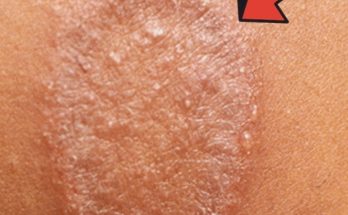Human Papillomavirus (HPV) is a very common virus, and in most cases, it doesn’t cause any noticeable symptoms.1 The body’s immune system often clears the infection on its own within two years.2 However, when HPV infections persist, they can lead to health problems, ranging from warts to certain types of cancer.3
Here are the key signs of HPV you should be aware of:
1. Genital Warts:
- This is the most common visible sign of HPV infection.
- They can appear on the vulva, vagina, cervix, penis, scrotum, or around the anus.4
- Genital warts can vary in appearance:
- Small or large
- Flat or raised
- Cauliflower-like bumps
- Tiny stem-like bumps
- Flesh-colored, pink, red, white, dark brown, or gray.5
- While usually painless, they can sometimes cause itching, discomfort, or bleeding, especially during or after sex.6
2. Other Warts (less commonly associated with sexually transmitted HPV types):
- Common warts: Rough, raised bumps often found on hands and fingers.7
- Plantar warts: Hard, grainy growths on the heels or balls of the feet that can be painful.8
- Flat warts: Flat-topped, slightly raised lesions that can appear anywhere on the body, but commonly on the face in children, beard area in men, and legs in women.9
3. Symptoms of HPV-Related Cancers:
- High-risk HPV types typically do not cause symptoms until they have led to precancerous cell changes or cancer. This is why regular screenings are crucial.
- Symptoms, if they occur, will vary depending on the location of the cancer:10
- Cervical Cancer: Often detected through regular Pap tests and HPV tests.11 Symptoms in later stages can include unusual vaginal bleeding (after sex, between periods, or after menopause), abnormal vaginal discharge, pelvic pain, or pain during sex.
- Anal Cancer: Symptoms may include anal bleeding, pain, itching, discharge, or changes in bowel habits.
- Oropharyngeal (Throat) Cancer: Can present as a persistent sore throat, hoarseness or voice changes, difficulty swallowing, ear pain, unexplained weight loss, or a lump in the mouth, throat, or neck.
- Penile Cancer: May cause changes in skin color or thickness, lumps, growths, sores, rash, strong-smelling discharge, or bleeding on the penis.12
- Vulvar Cancer: Persistent itching, pain, bleeding between periods, changes in skin color or thickness, or bumps/sores on the vulva.13
- Vaginal Cancer: Pain or bleeding after sex, bleeding after menopause, strong-smelling discharge, a noticeable mass in the vagina, painful/frequent urination, constipation, or pelvic pain.1
Important Considerations:
- Asymptomatic Infection: Many people with HPV have no symptoms and may not know they are infected, yet they can still transmit the virus.15
- Warts vs. Cancer-Causing Strains: It’s important to remember that the types of HPV that cause genital warts (low-risk) are generally different from the types that cause cancer (high-risk).16 Having genital warts does not mean you will develop cancer.Diagnosis: Warts are typically diagnosed by visual inspection.17 However, high-risk HPV infections are usually detected through screening tests like Pap smears and HPV tests, especially for cervical cancer.18 There are currently no routine tests for high-risk HPV in other areas like the penis, vulva, or anus, unless a suspicious lesion is present
If you notice any unusual growths, lumps, pain, bleeding, or other persistent symptoms in your genital area, mouth, or throat, it’s essential to consult a healthcare provider for an accurate diagnosis and appropriate management. Regular check-ups and screenings are vital for early detection of HPV-related issues, particularly for high-risk types.19

